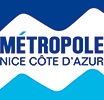Nice: involving citizens in urban risk prevention by reporting infrastructure damages

The city
Located on the South-East coast of France, Nice has a population of 350 000 inhabitants, being the second largest city on the Mediterranean coast. Nice is the capital of the Alpes-Maritimes department and the second biggest city of the Provence-Alpes-Côte d’Azur region after Marseille. The Department of Urban Risk Prevention of the City Hall is responsible for prevention, forecast, alert and local crisis management.
The challenge
Locked between the sea and the mountains, Nice enjoys exceptional natural assets. At the same time, because of its position, the city is exposed to many natural and industrial hazards, such as floods, earthquakes, risks related to the transport of hazardous goods, landslides, pollution and others. These threaten both its population and the urban infrastructure.
In order to enhance their capacity to react to such risks and their impacts, the Urban Risks Prevention Department, in charge of infrastructure building and maintenance, needed precise and real-time information to improve their actions. Furthemore, taking an integrated approach to risk management, Nice sought to improve risk prevention by increasing citizens’ awareness on the potential risks.
The satellite solution
In July 2012 the city of Nice has fully designed a free smartphone application with the help of the company Libre-Air. The app offers three types of services. One of them allows the citizen to directly report a dysfunction or damage to infrastructure from a list of pre-defined possibilities, such as water leakage or traffic lights failure, and it locates it thanks to the smartphone’s inbuilt GPS. The user can also add a picture of the damage and send it drectly to the Urban Risk Prevention Department. Furthemore, the application provides risk and hazard information collected via RSS feeds and tweets. Users can also subscribe to a warning service to be alerted in case of dangerous meteorological phenomena, flood, forest fires, accidents in the transport of hazardous goods, industrial accidents, pollution and exceptional alerts.
The result
At the end of 2012, the urban risk prevention application has already been downloaded 3 000 times from either the Apple or Adroid stores, or from the city’s website.
Not only does the app improve citizens’ awareness of potential hazards, but it also gives them an active role as players in urban risk prevention, which encourages them to adopt a responsible behaviour with respect to natural hazards.
This integrated risk management approach, coupled with real-time information of urban dysfunctions, offers a valuable support to urban managers to improve maintenance, better prioritise and intervene in a timely manner.

